The Dental Revenue Cycle: Everything You Need to Know
In today's blog we will be going over the nine steps found in the dental revenue cycle, as well as some other common challenges you may encounter!

Did you know that up to 70% of all dental bills contain at least one error?
That is a large amount of delayed dental bills. To make matters worse, each one of those claims causes a delay to the dental office related to them.
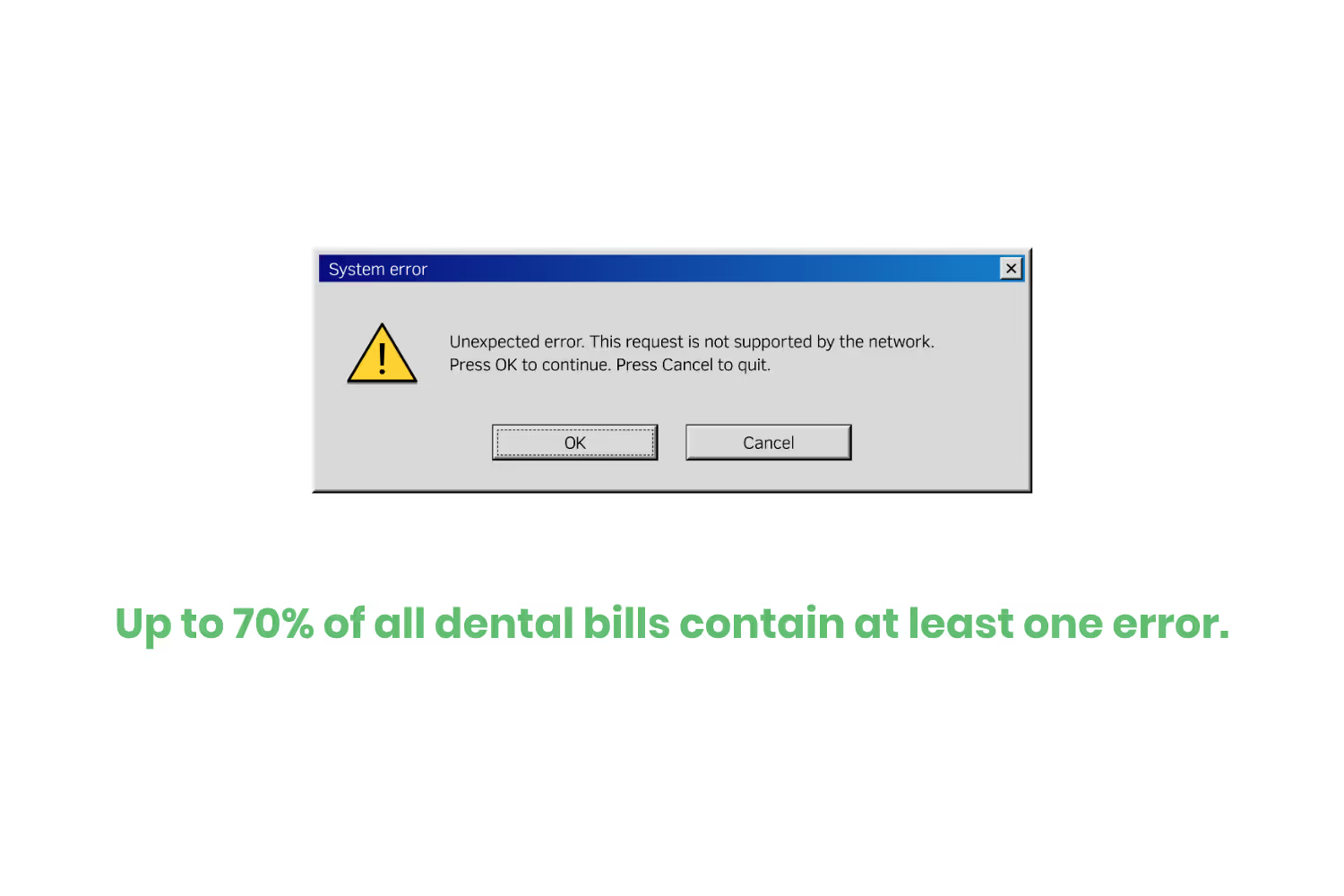
To fix those errors properly, it can take months! Striving to make sure your bills have no errors in the first place can help you receive your payment faster. Not to mention give you less headaches.
In today's blog we will be going over the nine steps found in the dental revenue cycle, as well as some other common challenges you may encounter!
The Nine Steps of the Dental Revenue Cycle
Step 1: Appointment Scheduling
The start of the dental revenue cycle happens when patients schedule the appointment, either online or in person. Most dentist offices utilize an Electronic Health Records (EHR). This system helps manage all of the patients’ information.
During this time, you can put a detailed note into your system to inform the dentist and or staff. This can help the billing department when coding the claims after the completed service.
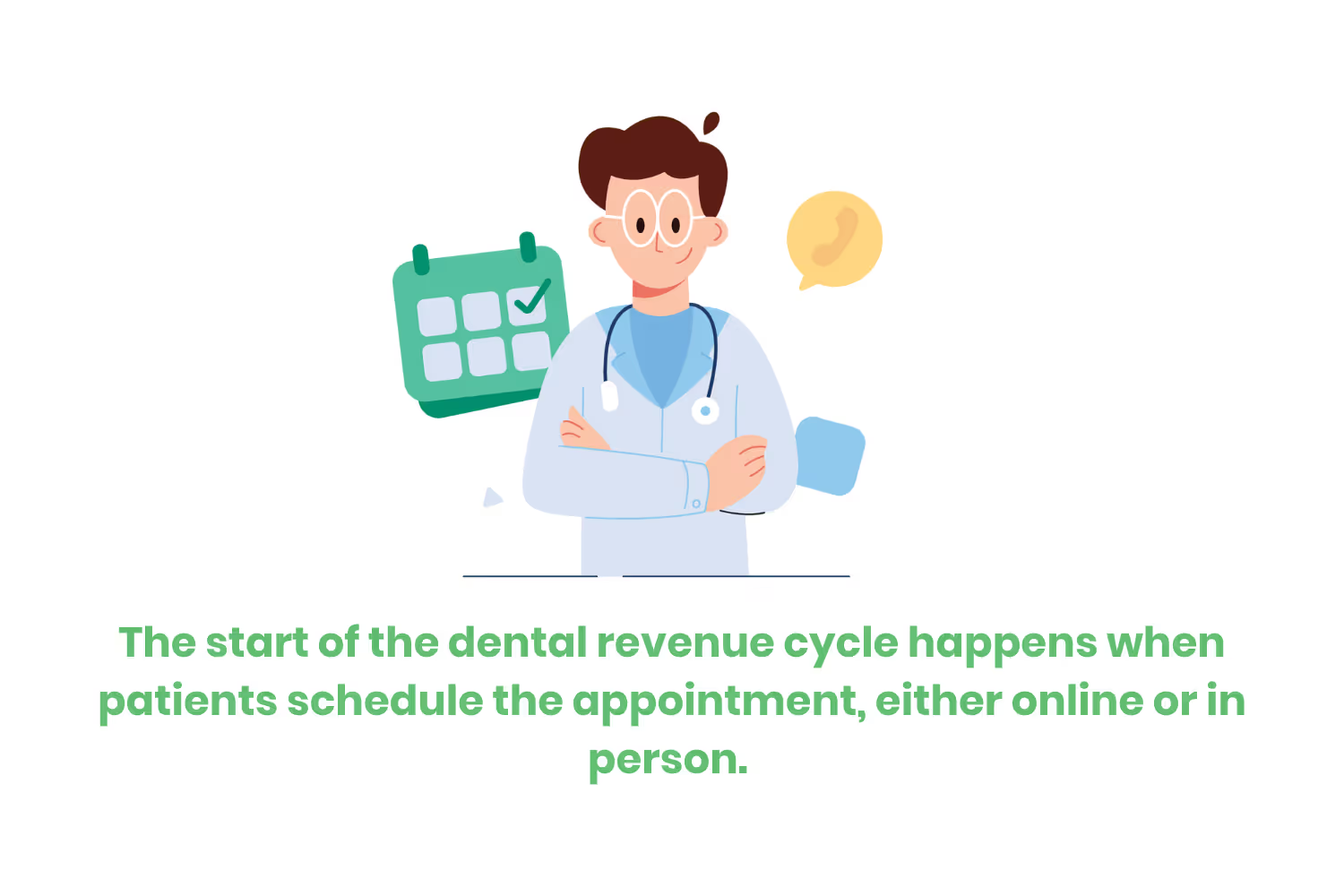
Step 2: Patient Registration and Insurance Verification
When the patient comes into the office for their appointment, it’s vital that your staff collects the patient's information. The information that needs to get collected at a minimum, is a form of identification, and an address
During the registration process, you will also need to have the patient sign any consent for treatment forms. If the patient is new, you may need to collect their dental history, or any allergies your office needs to be aware of.

During patient registration, your office staff will need to confirm that the patient's insurance has stayed the same and is still valid. If there are any changes, it is crucial that your staff collects their new insurance information. Also checking that if their coverage or copay has changed, if it has informed the patient is important to streamlining the billing process.
Step 3: Prior Authorization
Besides the general visits when seeing a dentist, some procedures will require prior authorization.
This step often requires the dental office to reach out to the patient's insurance company to receive prior authorization. In some cases the patient will need to reach out to their own insurance company to receive prior authorization. However, it is common that the responsibility lands on the shoulders of the dental office.
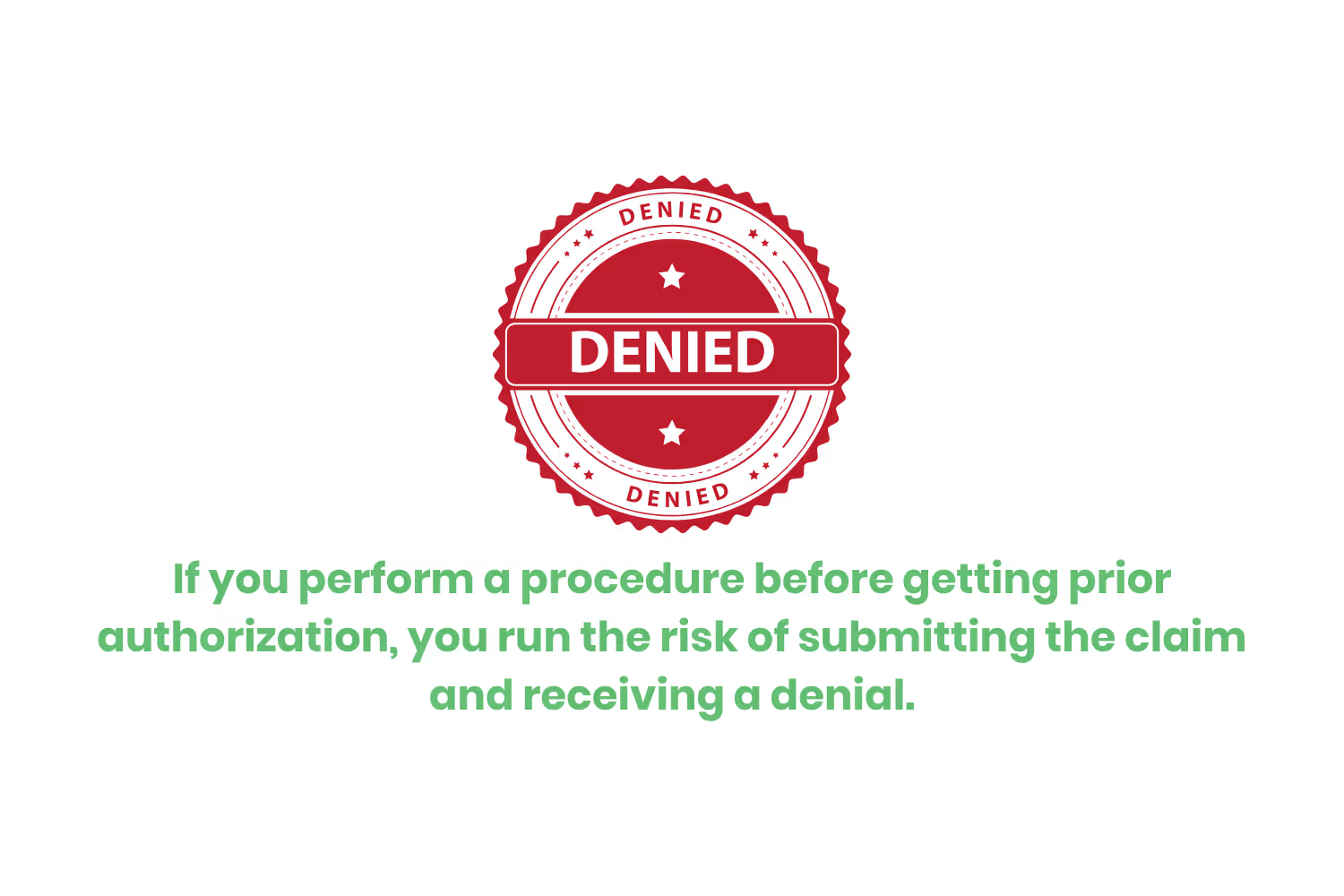
Obtaining prior authorization before the procedure is vital to ensure a streamlined billing process. If you perform the procedure before getting prior authorization, you run the risk of submitting the claim and receiving a denial. Denials are bad for business as they cause severe payment delays for dental organizations.
Step 4: Medical Coding
After the patient sees the dentist, the dentist will provide a detailed note in the patient's file. The billing department will look at all of the notes in that patient's file.
They then work with and reference Current Procedural Terminology (CPT) codes to categorize all of the services and procedures.
The use of CPT codes help streamline the billing process with the use of a universal coding system.
Step 5: Clearinghouse Scrubbing
Did you know that 1 in 7 claims get denied? That is about 200 million denials a year!
The experience of denial codes can cause a delay in the billing process. To avoid these denials, some billing departments are using clearinghouses to scrub the claims of any errors.
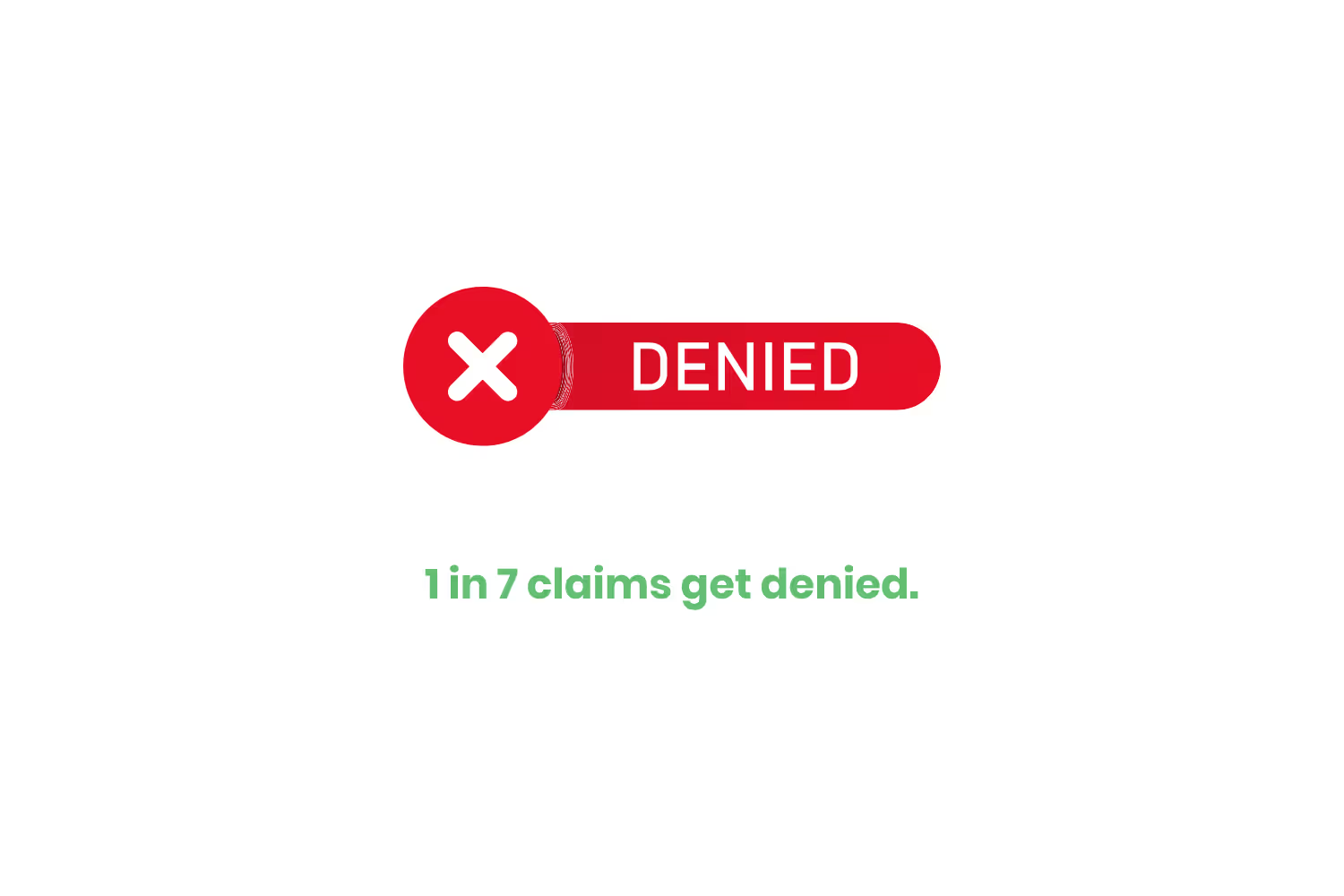
If there are any errors in the claims, the clearinghouse would send it back to the billing department. It would allow the billing department to fix any errors the clearinghouse found whilst scrubbing the data.
It is more favorable to use a clearinghouse (like us), as if the payer found an error it could take days, weeks or months to receive payment on a denied claim!
Step 6: Claim Submission
After the clearinghouse scrubs the claim and gives the okay, it then gets sent to the payer.

The payer will then review the claim.
They will review the documents, notes, and various other information left by the billing department.
This is why it is important to add as much accurate information and documentation to a claim as possible!
Step 7: Claim Adjudication
Now that the insurance company finally received the claim, they will begin to review it. As well as the patient's file.
To determine what gets covered by the insurance company, they look at a few different factors:
- Insurance Plans
- Co-Pays
- Deductibles
- Coverage
Once the insurance company determines the amount they will cover, they will pay that to the billing department. Leaving the remaining amount for the patient to pay. If they do see an error, they will deny it and it will go back to the billing department.
Step 8: Denial Code and Resubmission of Claim
So lets say you didn’t use a clearinghouse and you sent a claim with errors to a payer. The payer will send a denial code back to your billing department. Whoops.
Common reasons claims get denied are:
- Coding Errors
- Experimental Procedure
- Out-of-Network Provider
- Did not receive prior authorization

The denial code that the insurance company provides back to the dental office will help inform them on why the claim didn’t get paid.
Once the office receives the denial code, it’s up to them to find the exact error and attempt to fix the error. The billing department can also reach out to the insurance company to get more information about why the claim got denied…but this requires a lot of time being on hold.
When you resubmit the claim, it is vital that you document all of the information you have especially if it was not documented correctly before. The more denials your billing department experiences the longer it takes to receive the revenue.
Step 9: Patient Payment
After the insurance company determines the amount they will be paying, the remainder (if there is any) is now going to the patient. That seems straightforward…right?
It actually can be surprisingly challenging to get this payment from the patient. This can be due to the form of payment you accept. Having easy to use methods to collect payment can expedite the process.
Many dental offices accept cash, check (even through mail), and credit or debit cards either taken over the phone or in person. Having a variety of payment options can help ensure you get your payment as soon as possible.
Common Challenges in the Dental Revenue Cycle
There are a lot of stages of the revenue cycle so, naturally, there are some challenges that you should be aware of.
The most common challenge faced when in the revenue cycle are denials codes. This is because ANY error that may be in or about the claim will cause a denial code.
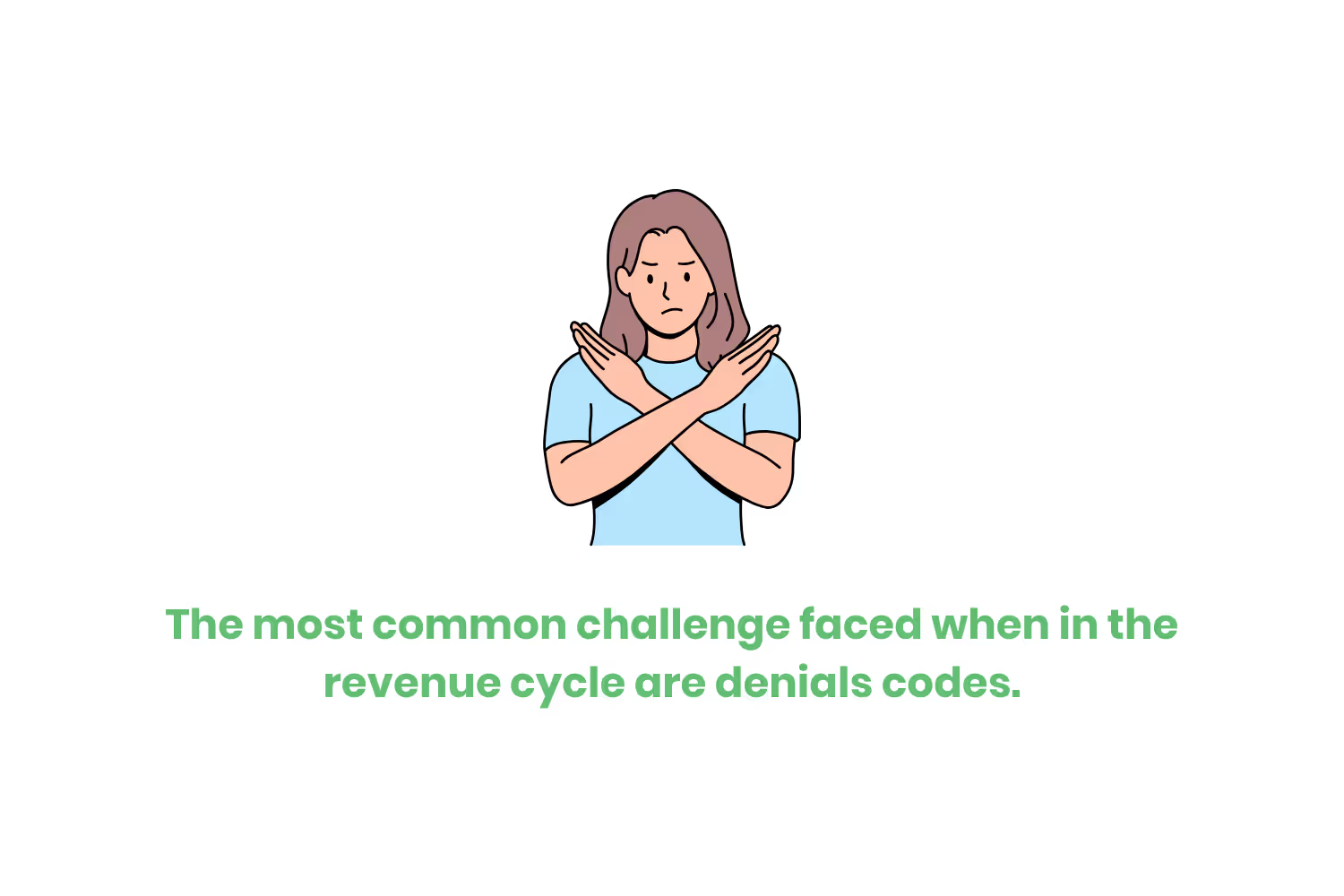
The most common reasons for denials:
- Did not receive prior authorization.
- Duplicate Claims.
- Missing/Incorrect Information.
The other challenge you may face is miscommunication between patients and the office staff. If your staff is not clear on how much will get covered by their insurance company can cause some issues.
If the patient receives a higher bill than originally quoted, they will not automatically pay it. They will most likely call the billing department, in an attempt to figure out where the disconnect was. This will not only delay their payment, but take time away from your billing department from filling claims.
Conclusion
The dental revenue cycle might seem simple at first, but it can get complicated as you and your staff work through. Each step—from scheduling to sending claims—needs careful attention to avoid mistakes and delays.
Knowing common errors, like wrong codes, missing documents, or rejected claims, is just the beginning. To really improve your revenue cycle, you need to take action.
Using tools like clearinghouses can help make your claims more accurate and speed up payments. Training your staff, checking your processes regularly, and using technology to handle repetitive tasks can also make a big difference.
By putting these safeguards in place, your practice can avoid problems, get paid faster, and create a better experience for your patients. A smooth dental revenue cycle doesn’t just keep your business running—it helps your practice grow and builds trust with your patients.
Emphasize your product's unique features or benefits to differentiate it from competitors
In nec dictum adipiscing pharetra enim etiam scelerisque dolor purus ipsum egestas cursus vulputate arcu egestas ut eu sed mollis consectetur mattis pharetra curabitur et maecenas in mattis fames consectetur ipsum quis risus mauris aliquam ornare nisl purus at ipsum nulla accumsan consectetur vestibulum suspendisse aliquam condimentum scelerisque lacinia pellentesque vestibulum condimentum turpis ligula pharetra dictum sapien facilisis sapien at sagittis et cursus congue.
- Pharetra curabitur et maecenas in mattis fames consectetur ipsum quis risus.
- Justo urna nisi auctor consequat consectetur dolor lectus blandit.
- Eget egestas volutpat lacinia vestibulum vitae mattis hendrerit.
- Ornare elit odio tellus orci bibendum dictum id sem congue enim amet diam.
Incorporate statistics or specific numbers to highlight the effectiveness or popularity of your offering
Convallis pellentesque ullamcorper sapien sed tristique fermentum proin amet quam tincidunt feugiat vitae neque quisque odio ut pellentesque ac mauris eget lectus. Pretium arcu turpis lacus sapien sit at eu sapien duis magna nunc nibh nam non ut nibh ultrices ultrices elementum egestas enim nisl sed cursus pellentesque sit dignissim enim euismod sit et convallis sed pelis viverra quam at nisl sit pharetra enim nisl nec vestibulum posuere in volutpat sed blandit neque risus.

Use time-sensitive language to encourage immediate action, such as "Limited Time Offer
Feugiat vitae neque quisque odio ut pellentesque ac mauris eget lectus. Pretium arcu turpis lacus sapien sit at eu sapien duis magna nunc nibh nam non ut nibh ultrices ultrices elementum egestas enim nisl sed cursus pellentesque sit dignissim enim euismod sit et convallis sed pelis viverra quam at nisl sit pharetra enim nisl nec vestibulum posuere in volutpat sed blandit neque risus.
- Pharetra curabitur et maecenas in mattis fames consectetur ipsum quis risus.
- Justo urna nisi auctor consequat consectetur dolor lectus blandit.
- Eget egestas volutpat lacinia vestibulum vitae mattis hendrerit.
- Ornare elit odio tellus orci bibendum dictum id sem congue enim amet diam.
Address customer pain points directly by showing how your product solves their problems
Feugiat vitae neque quisque odio ut pellentesque ac mauris eget lectus. Pretium arcu turpis lacus sapien sit at eu sapien duis magna nunc nibh nam non ut nibh ultrices ultrices elementum egestas enim nisl sed cursus pellentesque sit dignissim enim euismod sit et convallis sed pelis viverra quam at nisl sit pharetra enim nisl nec vestibulum posuere in volutpat sed blandit neque risus.
Vel etiam vel amet aenean eget in habitasse nunc duis tellus sem turpis risus aliquam ac volutpat tellus eu faucibus ullamcorper.
Tailor titles to your ideal customer segment using phrases like "Designed for Busy Professionals
Sed pretium id nibh id sit felis vitae volutpat volutpat adipiscing at sodales neque lectus mi phasellus commodo at elit suspendisse ornare faucibus lectus purus viverra in nec aliquet commodo et sed sed nisi tempor mi pellentesque arcu viverra pretium duis enim vulputate dignissim etiam ultrices vitae neque urna proin nibh diam turpis augue lacus.



![[ANSWERED] What is a Long-Term Care (LTC) Pharmacy](https://cdn.prod.website-files.com/67e2b8210878abcba6f91ae6/68d687806a075a1cf64659b0_WhatisLongTermCarePharmacy_925.avif)
